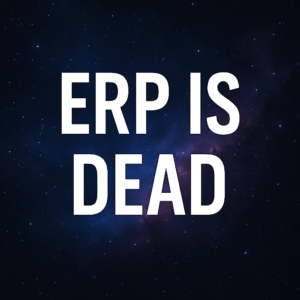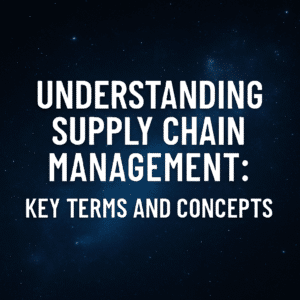Why does it take a catastrophic event for us to talk about supply chain management? In 2020, the world saw the initial economic consequences of the COVID-19 pandemic. People started hoarding toilet paper, dry goods, and alcohol while gaming consoles, home electronics, and personal fitness equipment flew off the shelves. Because supply and demand became so unpredictable, companies faced huge backlogs of orders and some even had to pause production. Global supply chains became front-page news, and not for good reasons.
The current state of global supply chains is different than we’ve seen historically, and the experience over the last year or so may leave a permanent mark on how supply chains are run in the future. Throughout 2020 and into 2021, we’ve seen several instances where consumers drove up demand and companies were unable to respond. We saw runs on PPE, toilet paper, baking yeast, ketchup packets, even automobiles.
These types of shocks to the market are indicative of just how complex supply chains have become. For example, the shortage of new cars was not caused by an inventory miscalculation, but rather a supply issue of electronic chips that are only made by two companies, both of which are located in Asia.
Taking a step back, now that economic forces are starting to normalize, both organizations and consumers are starting to ask tough questions about the state of global supply chains. Could these shortages have been avoided? Is this a technology-based problem? What can be done to fix an already backed up system, and can we mitigate the unexpected strains on supply chains in the future?
Here are a few strategies organizations can explore to help avoid supply chain blockage.
Table of Contents
ToggleIncrease Domestic Production
After a year and a half of economic turmoil, many manufacturers are facing intense political and market pressure to pull back production overseas and transfer operations back home to reduce the risk of disruption from international trade. However, domestic labor and resources are inherently more expensive and will inevitably drive up prices, which consumers will not like. In the end, this solution may work best as a partial solution, as complete deglobalization allows other companies to quickly swoop in and take your place.
Supply Chain Mapping
One way to avoid supply chain gridlock is to identify vulnerabilities via a process called supply chain mapping. This process is time-consuming and expensive, but could ultimately save you money by avoiding a costly shutdown. The mapping process involves combing through an organization’s entire supply chain to identify the level of risk associated with each vendor and what the economic impact would be if a certain source was lost.
Once you have this information, you can use it to diversify your vendors or to stockpile needed resources for a rainy day. This exercise will also help you identify areas that could be automated, highlighting possible best-fit software that could ease the operations within your supply chain.
Diversifying Vendors
Many organizations are adopting new strategies to mitigate their supply chain risk. Diversifying suppliers is one way to do just that. Instead of placing all of their bets on one horse, companies are now spreading out their risk. This way, if one vendor is lost, they will still be able to acquire their raw materials from a different supplier.
Some North American organizations trying to reduce dependency on China are choosing to do business with Mexico or other countries in Central and Latin America. That way, if a container ship gets stuck in the Suez Canal, they can rest easy knowing that their suppliers are close by and potentially unaffected by far-off market events.
The one-piece to be mindful of is that diversifying your vendors will affect your economies of scale with your go-to vendor. If you split your order for microchips, for example, from 100k units from one manufacturer to 50k units from two different manufacturers, you will lose out on the price break per unit that comes as you order in higher quantities. The question becomes, is it worth taking on the incremental cost in order to have a backup plan in case your go-to vendor goes rogue?

Revisiting Innovations
Because it requires a large investment of time and capital, many organizations choose to retain dysfunctional systems rather than bring in new technologies. However, as new tools come to market, powerful innovations will soon offer companies the flexibility to switch between vendors and mitigate supply chain bottlenecks more easily.
Automation is one realm that promises relief to those recovering from supply chain blockage. Although it’s often tossed around as a buzzword, companies are already implementing software that provides automation in myriad ways. From generating better data and insights to automating manufacturing processes where robots can take the place of social-distanced humans, the right software can drive operational efficiencies that will help keep your supply chain on track.
A supply chain management (SCM) system may also help organizations bounce back from supply chain blockage. An SCM centralizes data and processes so that organizations can get a better view of the flow of goods and services. Much like an ERP, an SCM creates a hub to track and manage data, control automated processes, and visualize important business transactions, often in real-time.
While advances like these offer many benefits to organizations, it is important to note that a technology-first approach is not always in an organization’s best interest. Often, technology like an SCM or an ERP is thought of as a fix-all solution, when in fact a company might be better off investing in the people and processes involved in implementing real change. This concept is called organizational change management, and we have plenty of resources available to help you learn more about this approach to successful digital transformation.
In Conclusion
The COVID-19 pandemic has unveiled many vulnerabilities in supply chains around the world. However, these supply chain blockages are often the catalyst to implementing effective change to how organizations manage supply and demand at scale. By considering several strategies such as diversification of suppliers, the geography of logistics, and new technologies, now may be the best time to take a close look at your supply chain and see what risks you’re able to mitigate.
I hope this article has inspired you to find new ways to improve the short and long-term needs of your supply chain and has given you hope if you ever find yourself stuck between the dueling forces of supply and demand. If you would like to dive further into the world of global logistics, please feel free to contact me. I’m here to act as your sounding board for your organization as you navigate the realities of today and the transformations of tomorrow.





